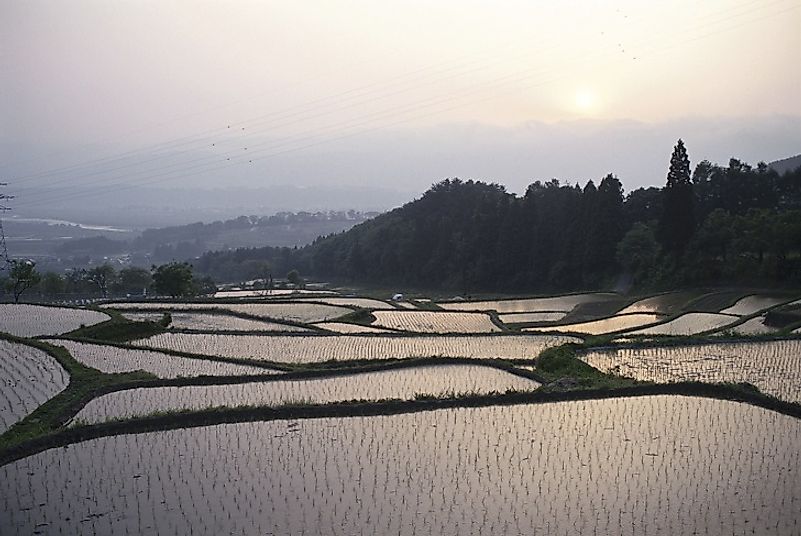The Rice Paddy Fields Of Asia: Cultural, Economic, And Culinary Importance

5. What Is Paddy Farming?
Paddy Farming is generally done in South and East Asia, where rice is grown under the partially flooded conditions. With this method, the arable land is used for growing the semi-aquatic rice varieties. The two primary forms of Paddy Rice, Indica and Japonica, have sprung from the generations of domestication of the wild rice widely known as Oryza Rufipogon. This culture is mainly found in the south, southeast and East Asia. The fields are built in the form of steep hillsides in the shape of terraces and are adjacent to the steep slopes which are usually river area or marshes. This type of farming needs a vast land area, heavy farm machinery or draft animals like Water Buffalo or Oxen, and a large amount of water to be used for the purpose of irrigation.
4. Historical Role
The first Paddy Fields were found in the Kunshan County in China dated back to 4330 BC. At the site of Majiabang Culture, the archaeologists found the carbon dating of the grains of rice found to be stored for the military or buried with the deceased persons. These fields were also found in Okhyun and the Yaumdong sites in the Korean land too which were fed by the local streams. In Japan, it was found in the Yayoi Period whereas in Philippines, it is said to be found in the prehistoric times and in Vietnam, the paddy farming is found in Hoa Binh culture and the Bac Son Culture.
3. Areas Paddy Rice is Grown
This type of cultivation is generally found in the Far East countries where though a small part of the land is used, but it helps in feeding the large population. In the countryside where Paddies are grown, the same ancient methods are generally used, except for in the case of India. The areas covered under this type of farming are China which covers 25% of the land, India which stands fourth in number in exporting rice. Indonesia, Japan, Italy, the Korean Peninsula, Malaysia, Nepal, and the Philippines are other countries where rice is grown near the rivers or other water-fed areas.
2. Benefits and Downsides
The benefits of using Paddy Farming are that it uses floodwater as well as groundwater for the cultivation of rice. It also helps in the beautification of the environment, purification of water, generating a good amount of oxygen and regulating the temperature. The fish farming is also carried out in the paddy fields as they eat harmful insects from the field, and their waste helps in increasing the fertility of the soil. On the other hand, the application of insecticides has resulted in the decline of some of the rare species, which were found in the main wetlands like Dragonflies, and many aquatic species are now in the danger zone as a result.
1. Environmental Impact and Alternatives
Paddy Farming involves varied agricultural activities, each of which place an impact on the environment as the emission of methane is done while fermenting the growing of rice. It causes many other effects like ozone depletion, climatic changes, and fossil fuel depletion. But if proper water management practices are implemented by the farmers then a reduction in the nutrient losses can be seen. Further improvements in irrigation and drainage systems will also help in bringing additional economic and environmental benefits.











